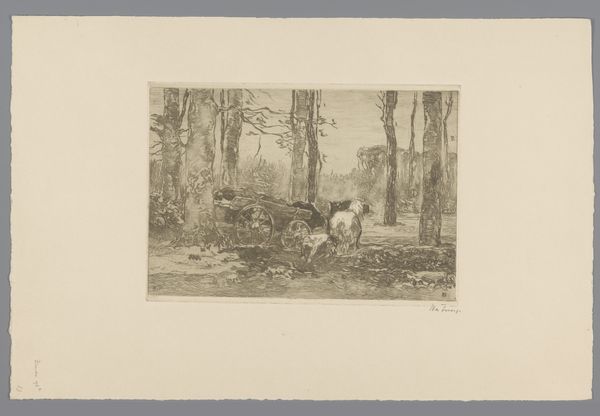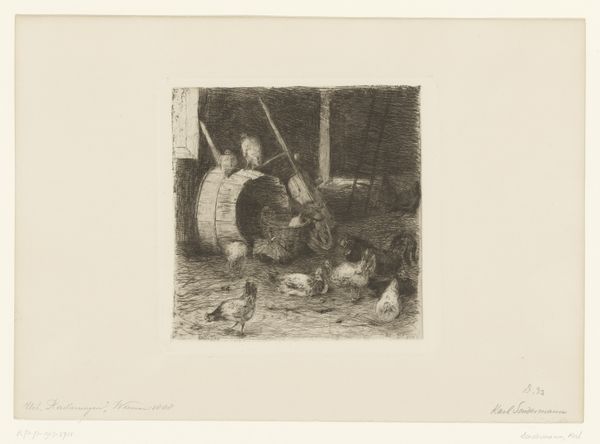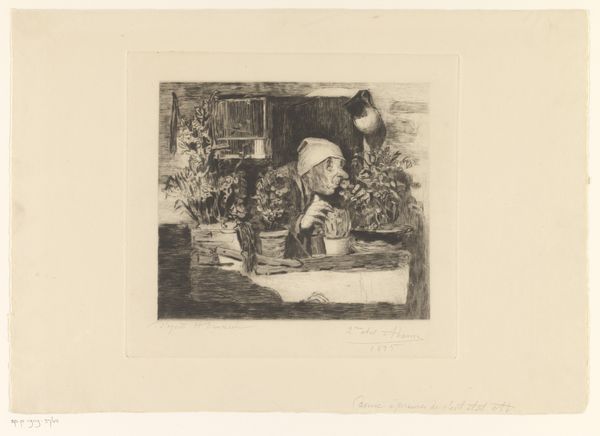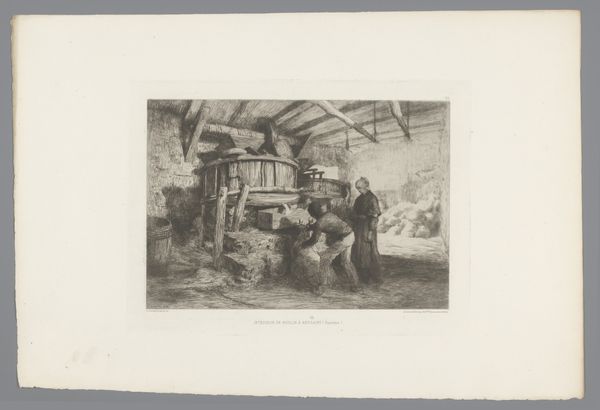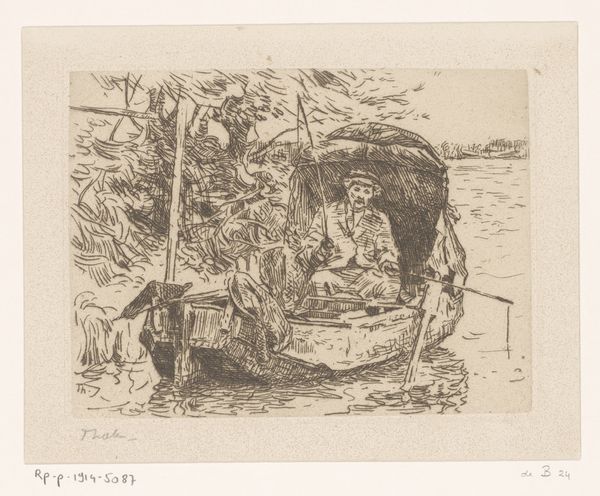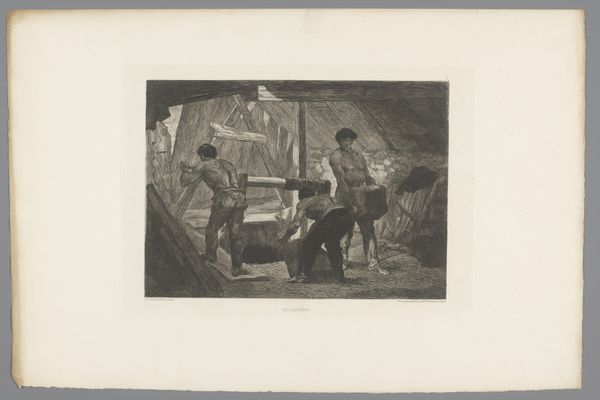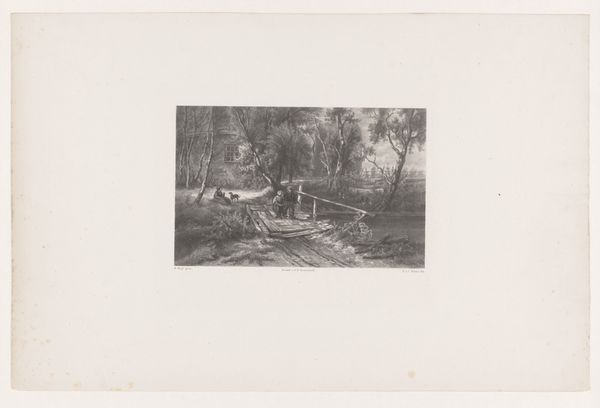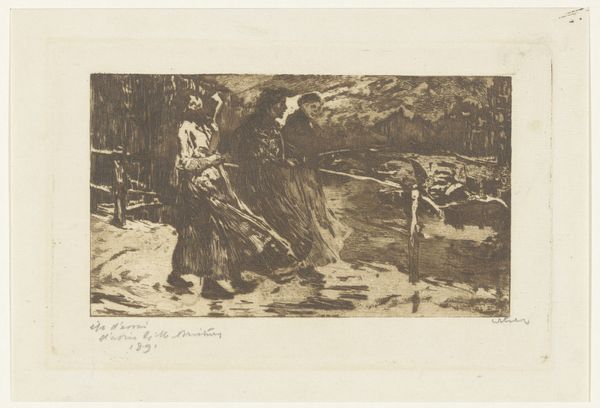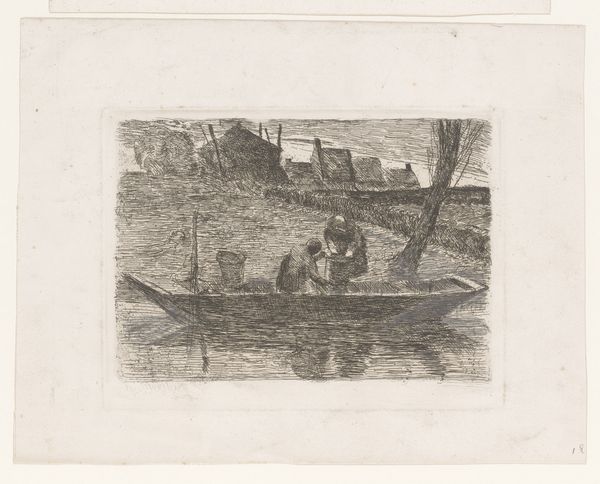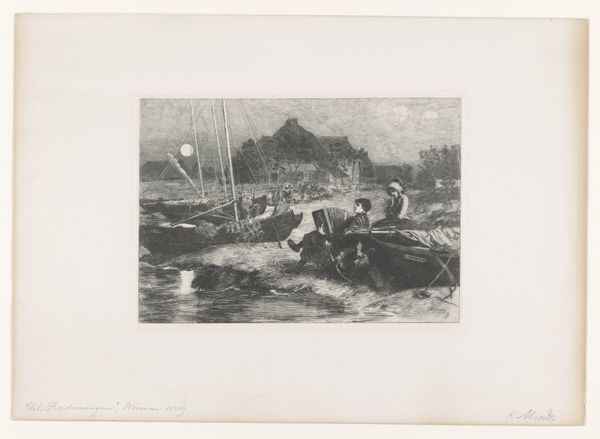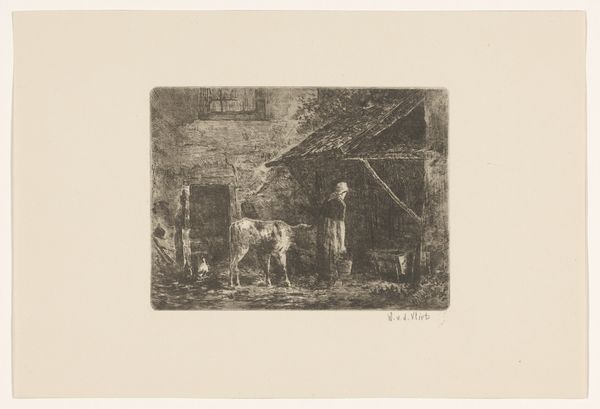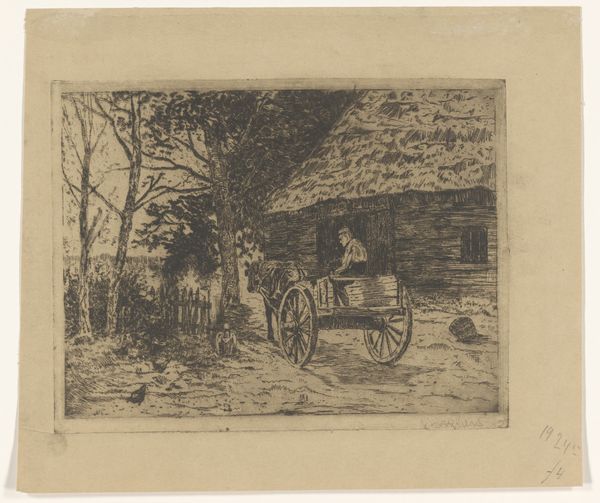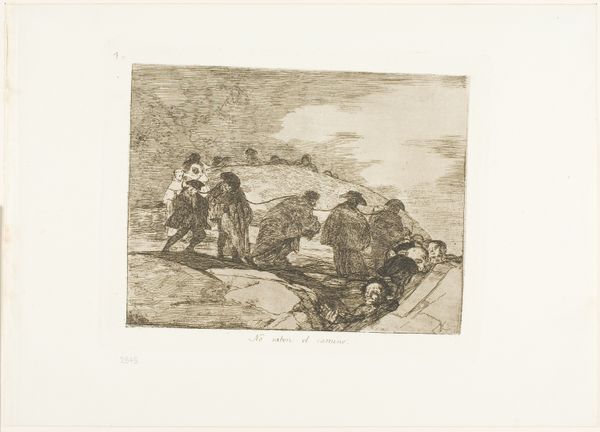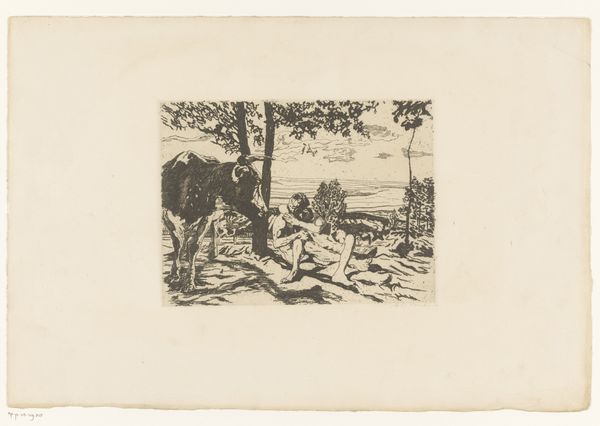
print, etching
# print
#
etching
#
landscape
#
genre-painting
#
realism
Dimensions: height 196 mm, width 275 mm
Copyright: Rijks Museum: Open Domain
This is Vee bij een waterput, or Cattle at a Well, an etching made by the Italian artist Filippo Palizzi in the 19th century. The process of etching involves covering a metal plate with a waxy, acid-resistant coating. The artist then scratches an image into this coating, exposing the metal beneath. When the plate is immersed in acid, the exposed lines are eaten away, creating grooves. The plate is then inked, and the surface wiped clean, leaving ink only in the etched lines. Finally, the plate is pressed onto paper, transferring the image. The etched lines create fine details and textures, capturing the nuances of light and shadow. The process is labor intensive and requires skill, reflecting a connection to traditional craft practices. The image portrays an idyllic rural scene. But beyond its aesthetic appeal, the print also hints at broader social issues of labor and rural life in 19th century Italy. The work invites us to consider the amount of labor involved in producing both the artwork itself and the scene it depicts, challenging the traditional separation of art from everyday life.
Comments
No comments
Be the first to comment and join the conversation on the ultimate creative platform.
